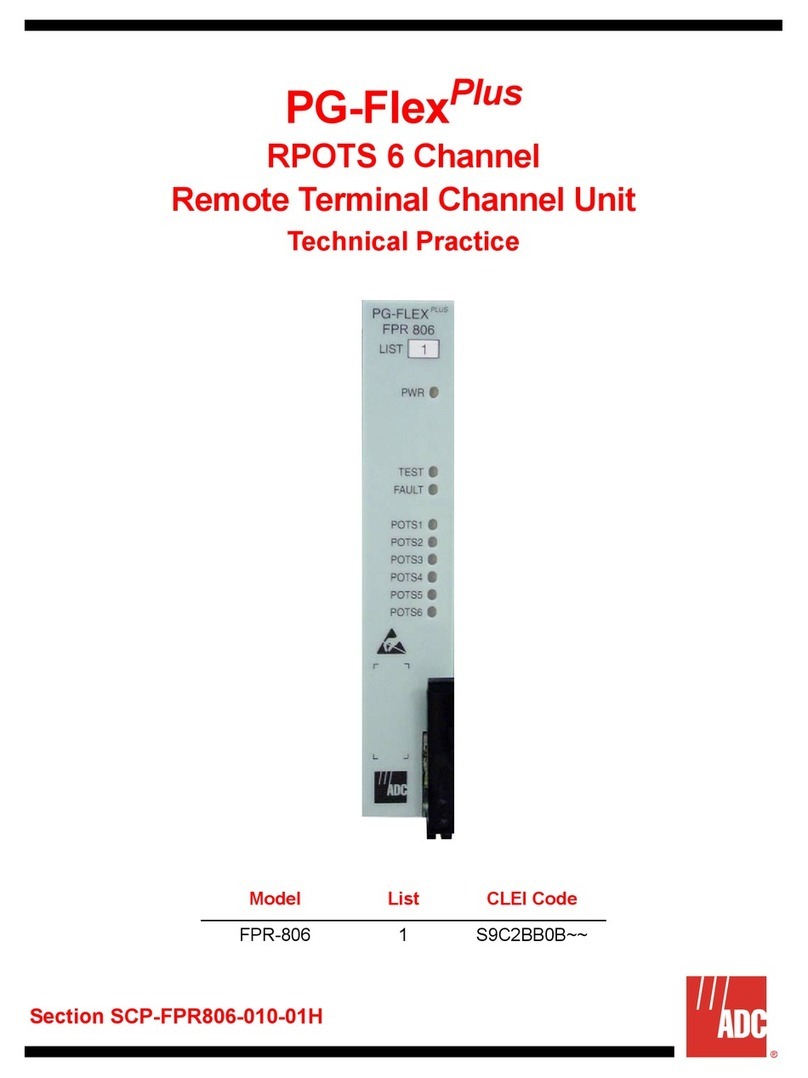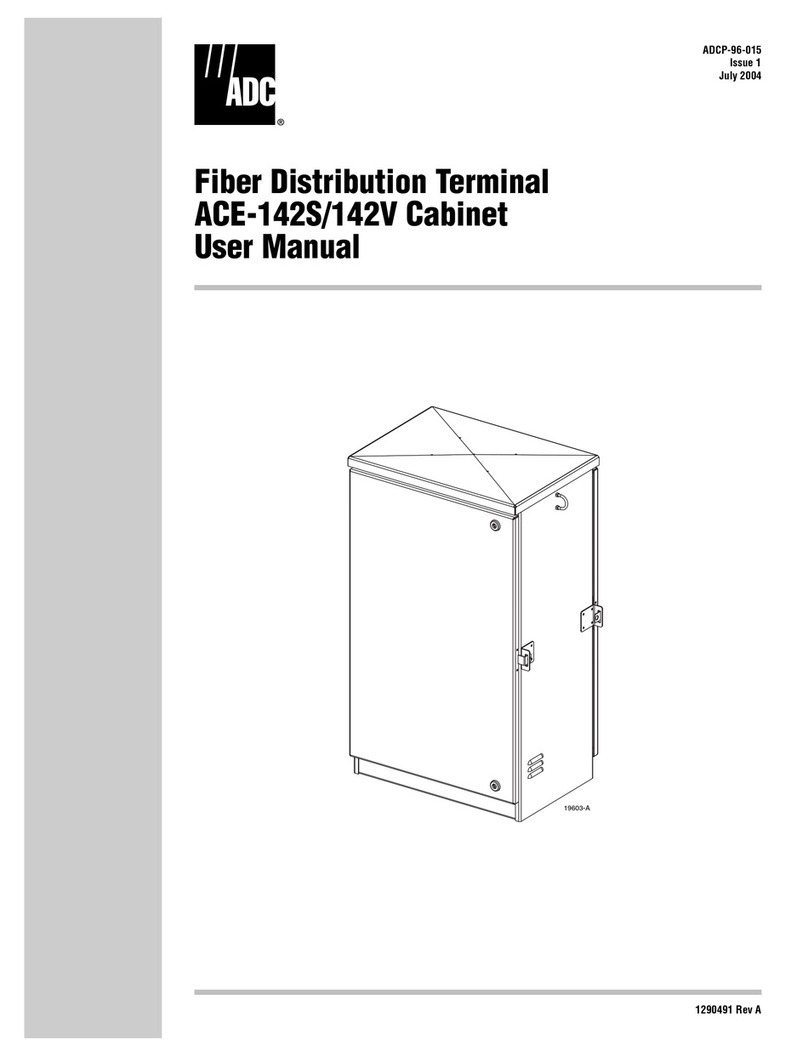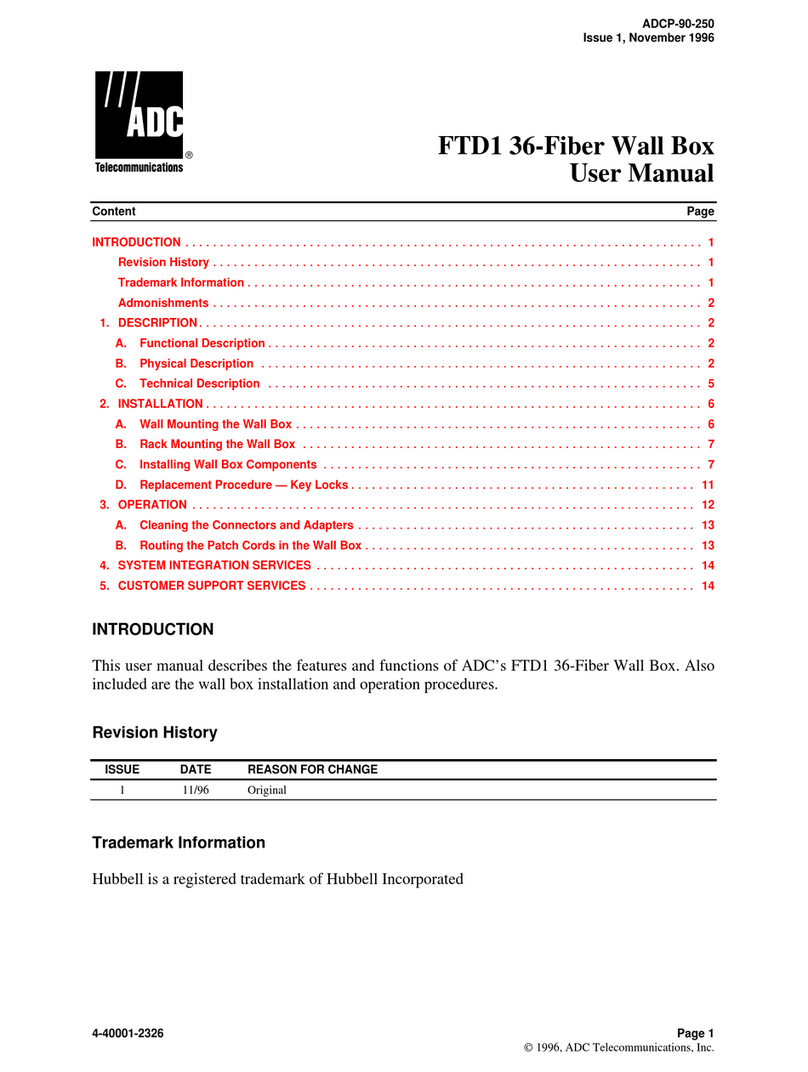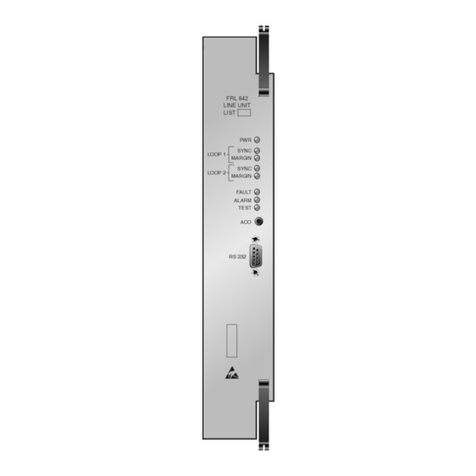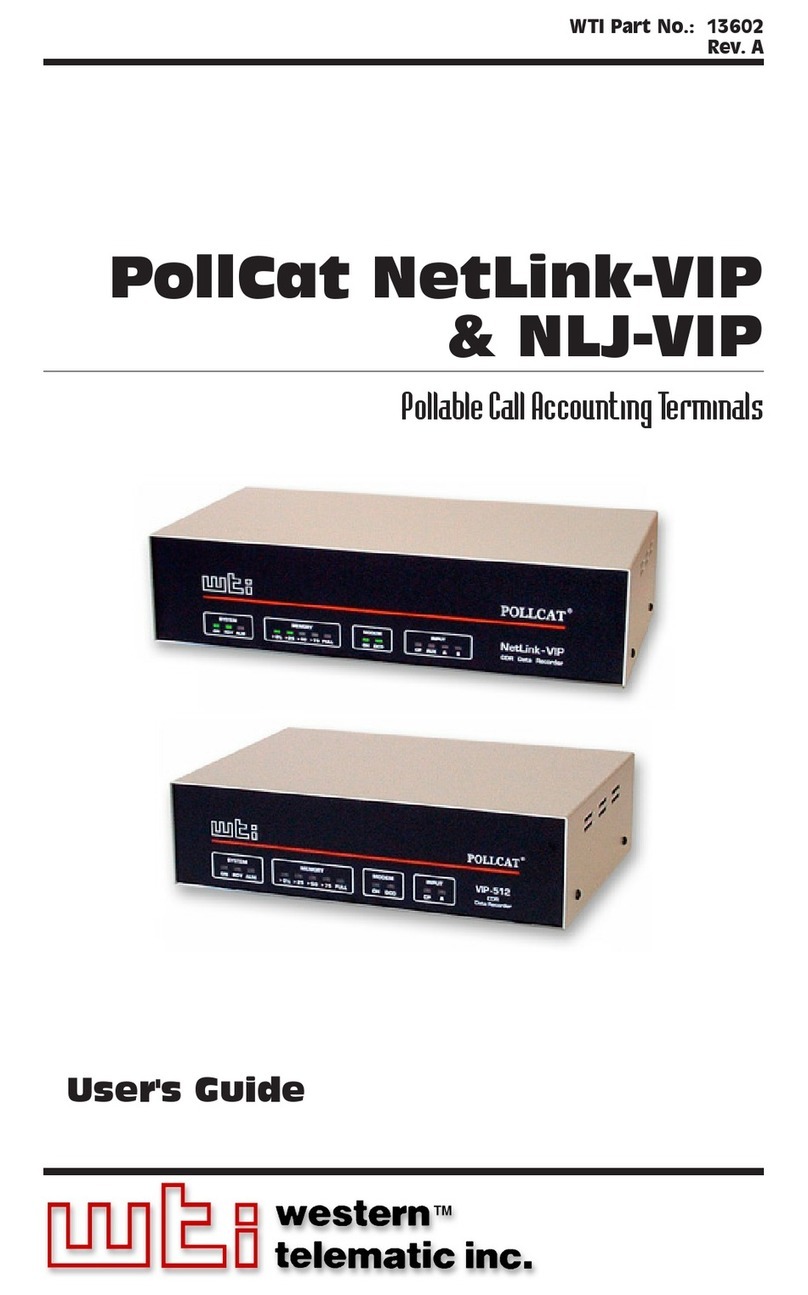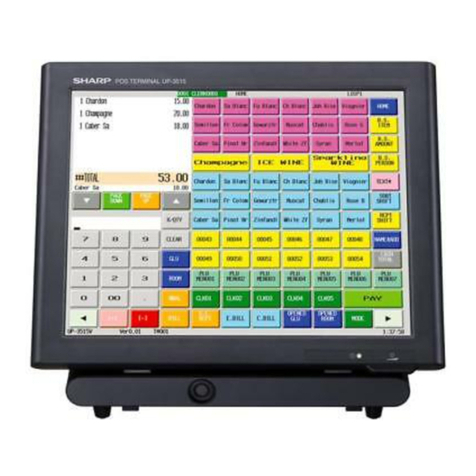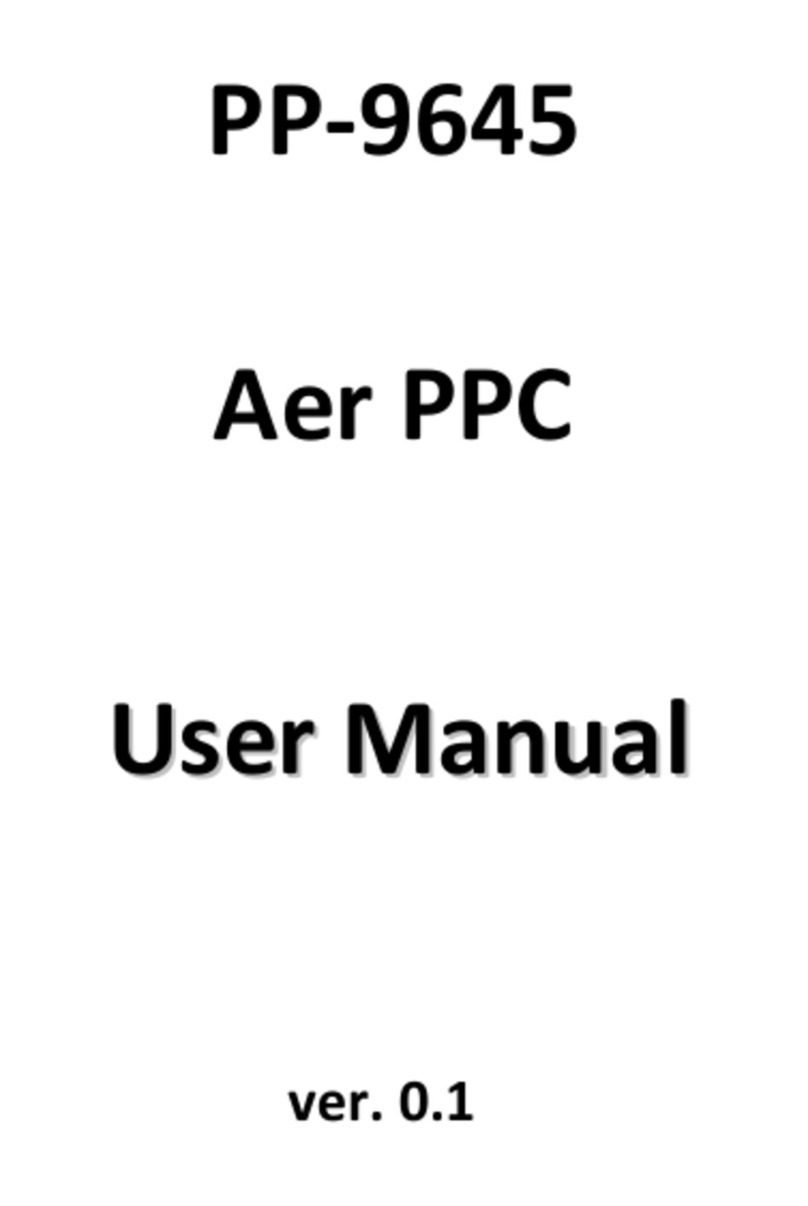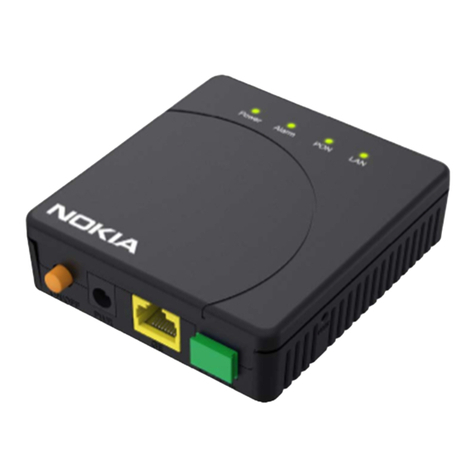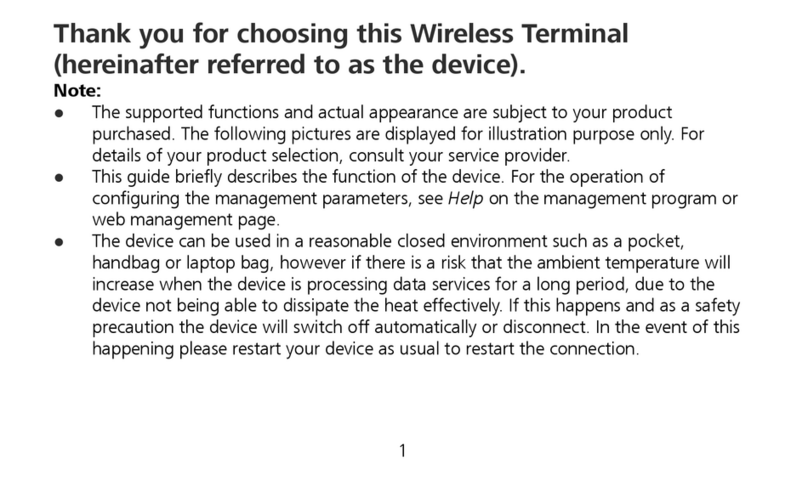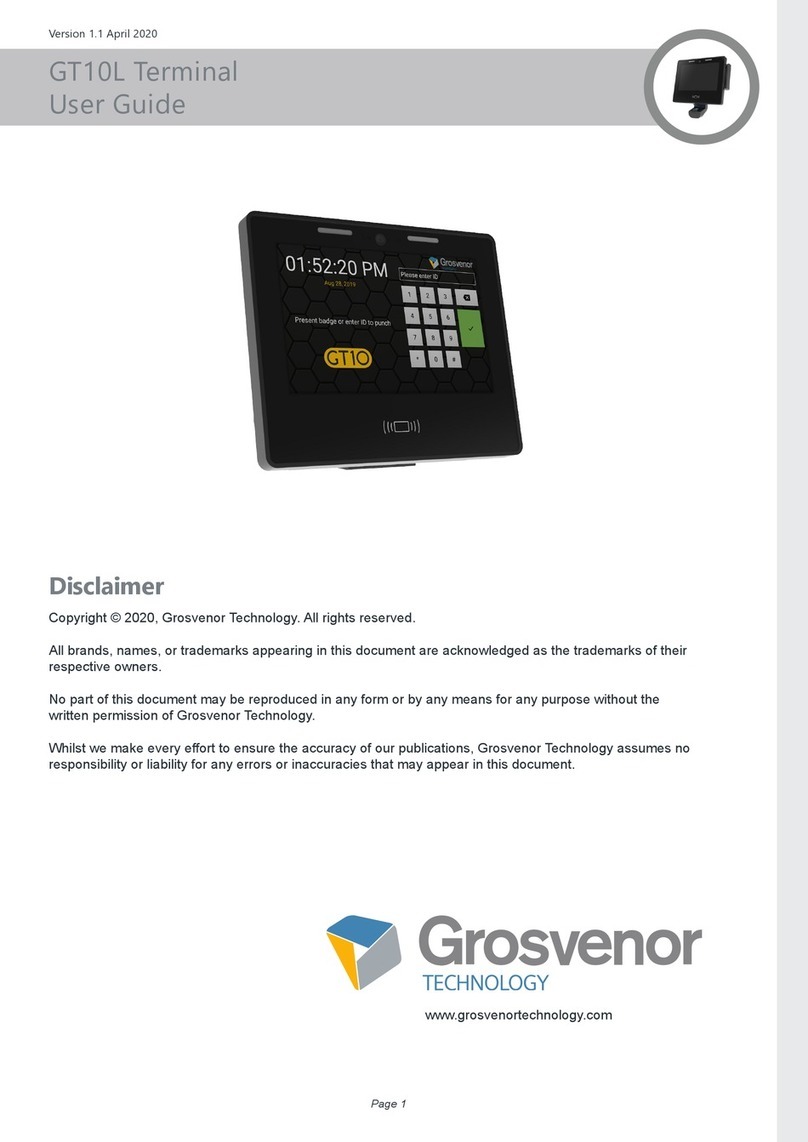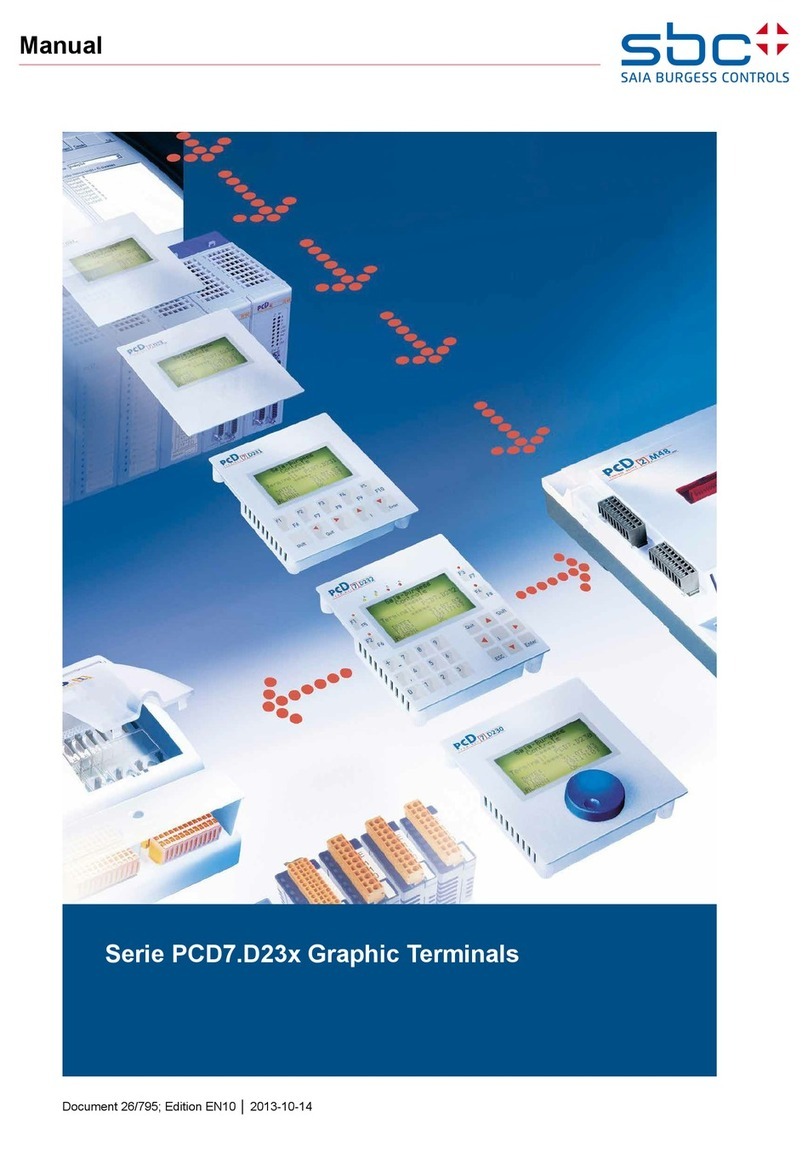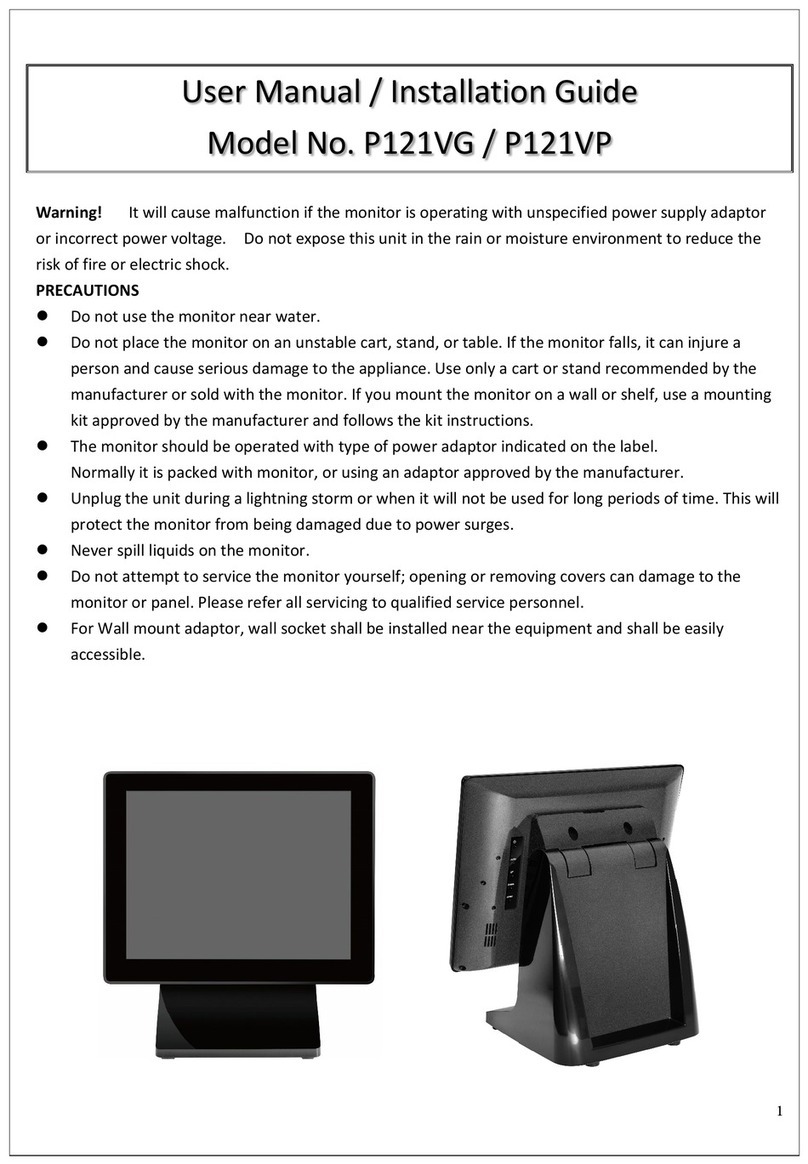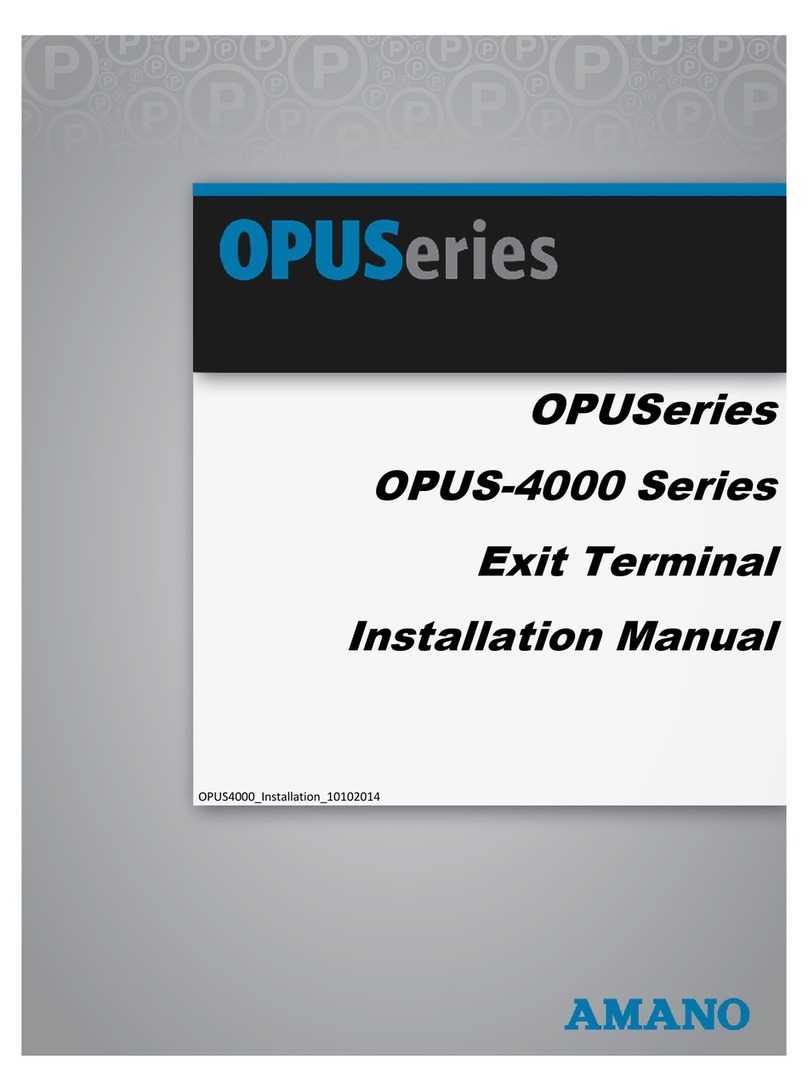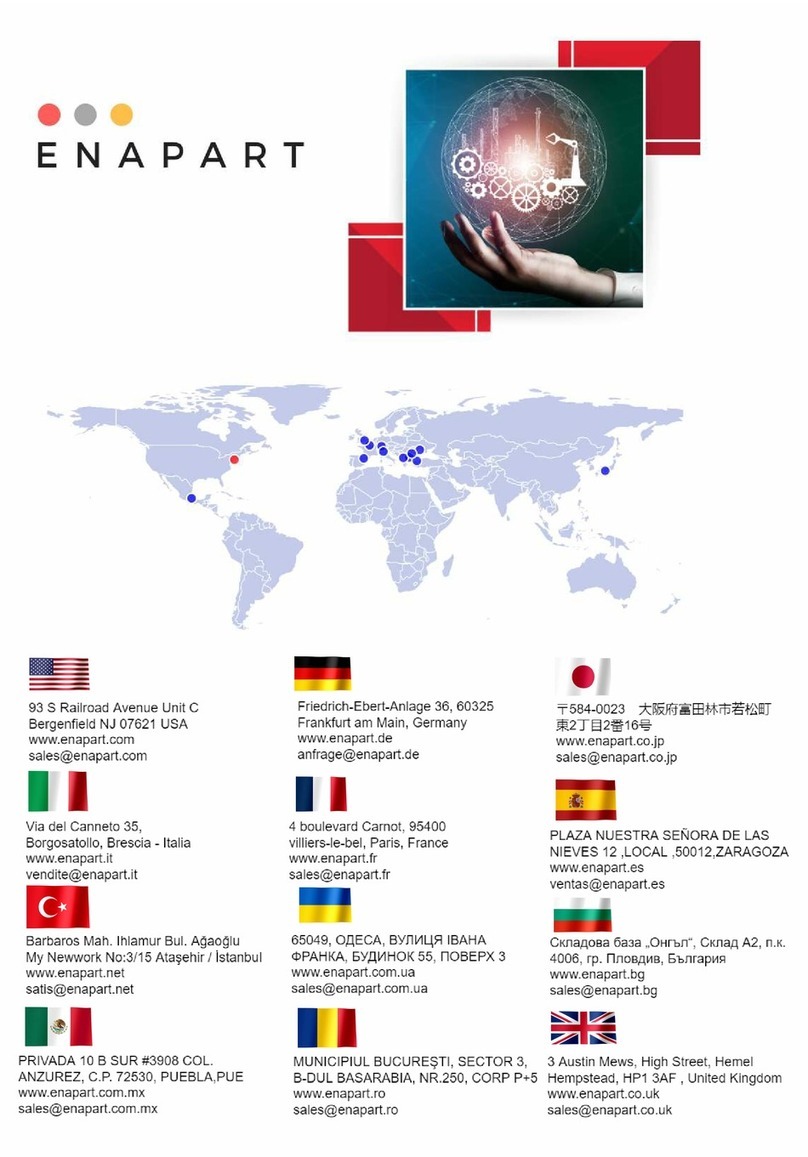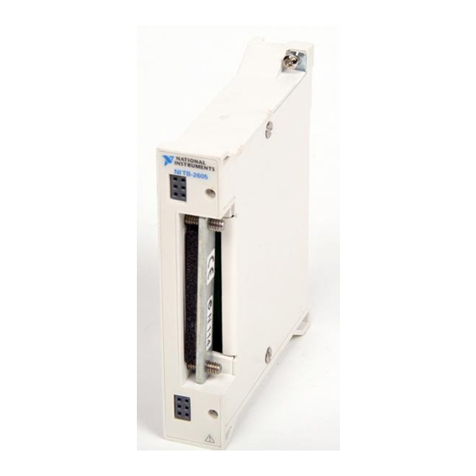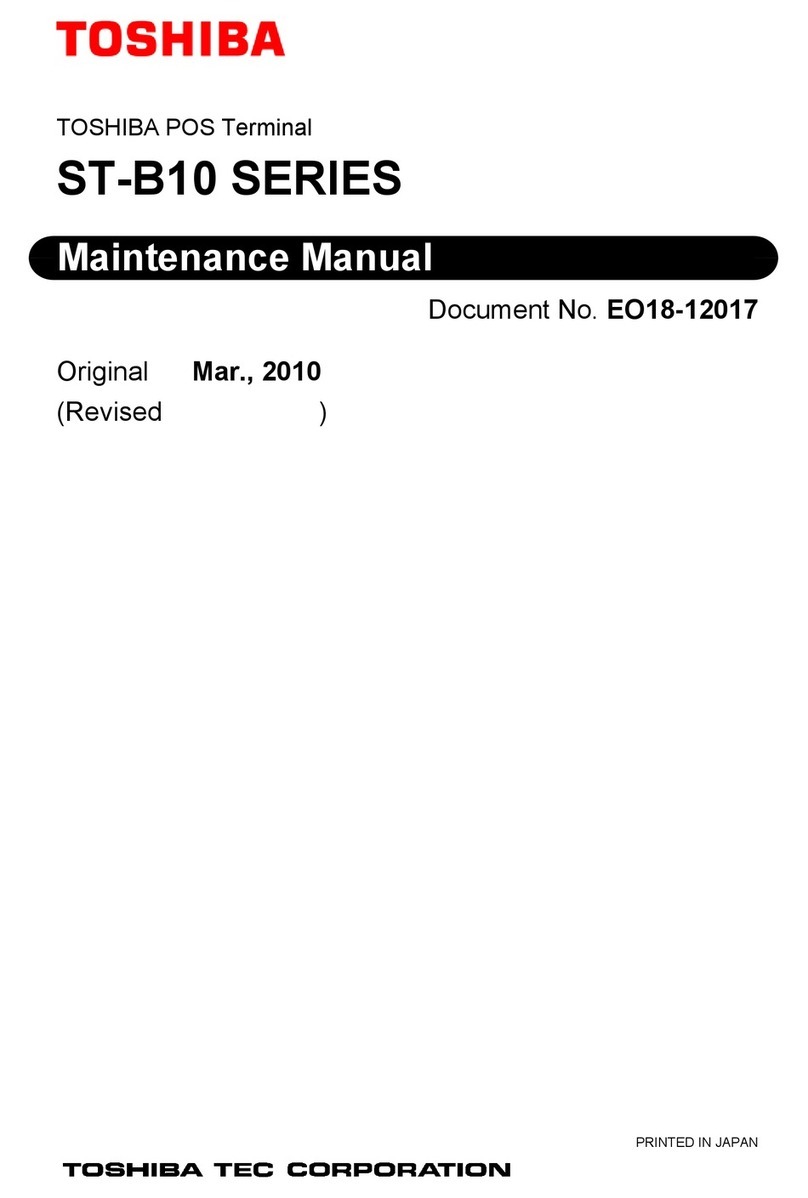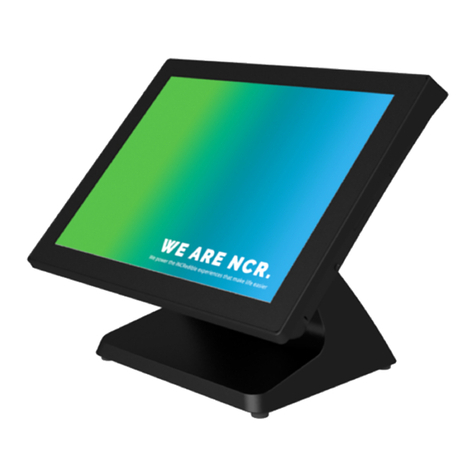ADC PG-Plus PRL-784 Instructions for use

TELEPHONE
NETWORK
INTERFACE
CUSTOMER
ACCESS
PG-PLUS
TECHNICAL PRACTICE
2 POTS
INDOOR/OUTDOOR NID
SECTION SCP-PRL784-022-03H
Model List CLEI Code
PRL-784 2B S9MSCLAA~~

SCP-PRL784-022-03H
January 6, 2003 PG-Plus PRL-784
Revision History of This Practice
©Copyright 2003 ADC DSL Systems, Inc. All Rights Reserved.
ADC is a registered trademark of ADC Telecommunications, Inc. PG-Plus is a registered trademark of ADC DSL Systems, Inc. No
right, license, or interest to such trademarks is granted hereunder, and you agree that you shall assert no such right, license, or
interest with respect to such trademarks. Other product names mentioned in this document are used for identification purposes only
and may be trademarks or registered trademarks of their respective companies.
Information contained in this document is company private to ADC DSL Systems, Inc., and shall not be modified, used, copied,
reproduced or disclosed in whole or in part without the written consent of ADC.
Contents herein are current as of the date of publication. ADC reserves the right to change specifications at any time without notice.
Information furnished by ADC is believed to be accurate and reliable. In no event shall ADC be liable for any damages resulting
from the loss of data, loss of use, or loss of profits and ADC further disclaims any and all liability for indirect, incidental, special,
consequential or other similar damages. This disclaimer of liability applies to all products, publications and services during and
after the warranty period.
Revision Release Date Revisions Made
01 December 18, 1998 Initial Release
02 February 1, 2002 Release to rebrand document to comply with ADC standards
03 January 6, 2003 Updated Product Support Information

SCP-PRL784-022-03H Using This Practice
PG-Plus PRL-784 January 6, 2003
USING THIS PRACTICE
Three types of messages, identified by icons, appear in the text.
INSPECTING YOUR SHIPMENT
Upon receipt of the equipment:
•Unpack each container and visually inspect the contents for signs of damage. If the equipment has been
damaged in transit, immediately report the extent of damage to the transportation company and to ADC.
Order replacement equipment, if necessary.
•Check the packing list to ensure complete and accurate shipment of each listed item. If the shipment is short
or irregular, contact ADC as described in “Returns” on page 18. If you must store the equipment for a
prolonged period, store the equipment in its original container.
Notes indicate information about special circumstances.
Cautions indicate the possibility of equipment damage or the possibility of personal injury.
Electrostatic Discharge (ESD) susceptibility symbols indicate that a device or assembly is
susceptible to damage from electrostatic discharge.You must wear an antistatic wrist strap
connected to the appropriate ground connection prior to performing installation procedures.
You must also observe normal ESD precautions when handling electronic equipment. Do not
hold electronic plugs by their edges. Do not touch components or circuitry.

Inspecting Your Shipment SCP-PRL784-022-03H
January 6, 2003 PG-Plus PRL-784

SCP-PRL784-022-03H
PG-Plus PRL-784 January 6, 2003 i
TABLE OF CONTENTS
Product Overview_____________________________________________________________________ 1
Description and Features....................................................................................................................1
Specifications .....................................................................................................................................2
Installation___________________________________________________________________________ 3
Required Tools and Test Equipment..................................................................................................3
Preparing the RT for Wiring ..............................................................................................................3
Mounting the RT................................................................................................................................4
Open the RT Housing ........................................................................................................................5
Wiring the RT ....................................................................................................................................7
Reference Label...................................................................................................................8
Attach the Frame-Ground Wire...........................................................................................9
Attach the HDSL Tip and Ring Wires...............................................................................10
Attach the POTS Drop Wires ............................................................................................11
Turn up and Testing .........................................................................................................................12
Close the Housing ............................................................................................................................13
Fault Isolation _______________________________________________________________________ 14
RT Status Indicators.........................................................................................................................14
COLU Fault Indicators.....................................................................................................................14
Subscriber Reported Faults ..............................................................................................................16
Product Support _____________________________________________________________________ 18
Technical Support ............................................................................................................................18
Limited Warranty.............................................................................................................................18
Returns .............................................................................................................................................18
FCC Class B Compliance ................................................................................................................20
Modifications ...................................................................................................................................20
Acronyms___________________________________________________________________________ 21

SCP-PRL784-022-03H
ii January 6, 2003 PG-Plus PRL-784

SCP-PRL784-022-03H
PG-Plus PRL-784 January 6, 2003 iii
LIST OF FIGURES
1. Typical PG-Plus Application...........................................................................................................................1
2. Mounting the RT .............................................................................................................................................4
3. Securing the Customer Access Door...............................................................................................................6
4. Securing a Line Module ..................................................................................................................................7
5. Reference Label...............................................................................................................................................8
6. Attaching the Frame-Ground Wire..................................................................................................................9
7. Attaching the HDSL Tip and Ring Wires .....................................................................................................10
8. Inserting the POTS Wires..............................................................................................................................11
9. Attaching the POTS Wire Pair ......................................................................................................................11
10. Unplugging the RJ-11 Jack ...........................................................................................................................12
11. Status Window...............................................................................................................................................14

SCP-PRL784-022-03H
iv January 6, 2003 PG-Plus PRL-784

SCP-PRL784-022-03H Product Overview
PG-Plus PRL-784 January 6, 2003 1
PRODUCT OVERVIEW
This practice describes the ADC®PG-Plus®PRL-784, List 2B, a Remote Terminal that provides interfaces to two
2 POTS RTs for four POTS subscribers.
DESCRIPTION AND FEATURES
A PG-Plus application (see Figure 1) provides bidirectional transport of multiple DS0s, over a single,
unconditioned wire pair using HDSL technology. Using an existing cable, PG-Plus provides for higher bandwidth
needs of residential and business customers by providing multiple POTS interfaces on a single HDSL twisted-pair
wire. A typical configuration of PG-Plus application consists of:
•COTS
•COLU
•Two RTs
Figure 1. Typical PG-Plus Application
The COLU uses ADC's HDSL technology to provide digital transmission without the need for repeaters, loop
conditioning, or pair selection.
The COLU can be installed in the PCS-718 or the PCS-719 COTS. The COLU operates in the standalone mode
with no other COTS circuit cards required. Advanced features such as performance monitoring, alarm reporting,
and testing require the addition of the PAU or the PMU. Line power is provided to the RT by the COLU.
Metallic fallback provides a direct connection from the CO to one subscriber under fault conditions. Service is
provided to the first POTS subscriber on the affected system. At the RT, the system exits metallic fallback and
attempts to synchronize if either the first POTS or the HDSL Tip to Ring pair is shorted for at least three seconds,
and then released for at least three seconds. Otherwise, the COLU checks for the presence of an RT every five
minutes. If an RT is present, the system begins HDSL synchronization acquisition.
Relays in the COLU and RT provide a path for SDT and metallic fallback operation. These relays are used to
establish a circuit to POTS # 1 during fault conditions and to provide for drop testing of the selected subscriber
line from the CO location.
POTS-1A
POTS-2A
POTS-1B
POTS-2B
COLU
COTS
HDSL Pair A
HDSL Pair B
RT-A
RT-B
POTS-1A
POTS-2A
POTS-1B
POTS-2B

Product Overview SCP-PRL784-022-03H
2 January 6, 2003 PG-Plus PRL-784
SPECIFICATIONS
Power
HDSL Line Input Voltage +140 Vdc, maximum
HDSL Line Start-up Voltage 200 Vdc Tip to Ring, minimum
RT Input Power 7.7 Watts Tip to Ring, maximum
HDSL
Line Code 2B1Q
Line Rate 65.3 K symbols/sec; 130.6 Kb/sec
Reach 18.0 kft, 26 AWG (.40 mm); 25.5 kft, 24 AWG (.51 mm); 36.5 kft, 22 AWG (.64
mm); 62.0 kft, 19 AWG (.91 mm)
Maximum Line Attenuation 46.4 dB at 33 kHz
Environment
Temperature -40°F to +149°F; -40°C to + 65°C
Humidity 5 percent to 95 percent noncondensing
Altitude -200 ft. MSL to 13,000 ft.; -60 m to 4,000 m
Vibration NEBS
Electrostatic Discharge Per GR-1089-CORE
Power and Lightning Per GR-1089-CORE
Human Safety Per UL 1950
Emissions Radiation and Immunity Per FCC Part 15 for Class B digital devices
POTS Interface
Analog Impedance 600 Ω
Supported Subscriber Drop 100 Ω plus 430 Ω for handset
Open Circuit Voltage (no phone) 48 Vdc Typical
Minimum Phone Current 23 mA
Connectors
HDSL 3-terminal station protector, 3/8-inch hex nut
POTS Screw Terminals on RJ-11 line interface
Dimensions
Height 10.25 in. (26.0 cm.)
Width 8.5 in. (21.6 cm.)
Depth 4.75 in. (12.1 cm.)
Weight 4.0 lbs. (1.81 kg.)

SCP-PRL784-022-03H Installation
PG-Plus PRL-784 January 6, 2003 3
INSTALLATION
The installation of an RT involves two procedures, mounting and wiring the RT. These procedures are described
in the following sections.
To ensure the safety of personnel and equipment, observe the following safety rules:
REQUIRED TOOLS AND TEST EQUIPMENT
•POTS Telephone set
•1/4-inch flat-head screwdriver
•No. 1 Phillips screwdriver
•insulated-handle 3/8-inch nut driver
•5/32-inch hex key, drilled for tamper-proof fasteners
•insulated-handle wire stripper
•insulated-handle needlenose pliers
•insulated-handle wire cutter
PREPARING THE RT FOR WIRING
HDSL and subscriber wiring are threaded through rubber grommets at the bottom of the RT. Subscriber line
connections are made through the right-hand side of the Line Modules. Use a No. 1 Phillips screwdriver to punch
two small holes in the bottom of the rubber grommet on the left-hand bottom side and one small hole in the
right-hand grommet of the RT.
Be careful when installing or modifying telephone lines. Dangerous voltages can be present. It is unsafe to
install telephone wiring during a lightning storm. Always disconnect all telephone lines and power
connections before servicing or disassembling this equipment.
All wiring external to the product should follow the local wiring codes.
Always treat the HDSL pair as if it were live with high voltage present. Use caution when installing an
HDSL pair that is already connected to a COLU, because dangerous voltages are present on the HDSL
pair.
The COLU, unless previously disabled by means of Craft provisioning, periodically attempts to power up
the RT by applying +130 Vdc with respect to ground to the HDSL pair. The COLU also initiates a start-up
after a momentary short has been applied to the HDSL pair. The COLU responds with start-up voltage 3
seconds after removal of the short.
Cutting the grommet with a utility knife or something similar is not recommended, because this can cause
too large an opening thus allowing contaminants to enter.

Installation SCP-PRL784-022-03H
4 January 6, 2003 PG-Plus PRL-784
MOUNTING THE RT
Use the two No. 10 x 1.5-inch wood screws and flat washers provided in the Mounting Kit to attach the RT to the
side of the customer residence (see Figure 2). For mounting on stucco or other suitable surfaces, use the two
No. 10 x 1-inch anchor nuts from the kit.
Figure 2. Mounting the RT
Mount the RT only as shown, with all access openings facing down. Otherwise, possibly damaging
materials (such as fluids) can enter the RT.
TELEPHONE
NETWORK
INTERFACE
CUSTOMER
ACCESS
Customer Access doo
r
M
oun
ti
ng
h
o
l
e
Mounting hole

SCP-PRL784-022-03H Installation
PG-Plus PRL-784 January 6, 2003 5
OPEN THE RT HOUSING
You have full access to the interior of the RT and to each Line Module inside the RT by loosening the Telco
override screw from the Customer Access door, or by loosening the tamper-proof screw from the Telco Access
door (see Figure 3). The tamper-proof screw can be either of the following:
•No. 8 pan-head pin and socket type, that requires a 5/32-inch drilled hex key. The No. 8 pan-head pin and
socket type screw is preferred for improved security.
•3/8-inch hex-head screw, which requires a 3/8-inch nut driver (216 tool or can wrench).
In either case, to gain access to the interior of the RT and to each Line Module, use a 5/32-inch drilled hex key to
loosen and then remove the Telco override screw from the Customer Access or Telco Access door.

Installation SCP-PRL784-022-03H
6 January 6, 2003 PG-Plus PRL-784
Figure 3. Securing the Customer Access Door
For installations that service more than one subscriber from a single RT, plug the customer-padlock hole in the
Customer Access door hasp with a 3/8-inch diameter hole plug (see Figure 3).
Subscribers can place a padlock through the customer-padlock hole drilled into the Customer Access door hasp
to secure the Customer Access door (see Figure 4).
TELEPHONE
NETWORK
INTERFACE
CUSTOMER
ACCESS
Customer Access latch
Telco override screw
Customer Access scre
w
Customer-padlock hole

SCP-PRL784-022-03H Installation
PG-Plus PRL-784 January 6, 2003 7
Figure 4. Securing a Line Module
WIRING THE RT
A wiring harness, consisting of a cable for the two POTS pairs, a cable for the HDSL pair, and a frame ground
wire, is held with a strain relief as it exits the inner metal frame. The wiring harness is factory-wired to the primary
protection devices for the POTS and HDSL pairs and to the FGND bus. An additional frame ground is attached
to the inner metal frame. The Line Modules on the POTS lines provide an RJ-11 test jack for isolating trouble to
the network or subscriber. Each POTS line is protected by a over-voltage-protected threaded binding post under
the Telco cover.
HDSL and subscriber wiring are threaded through rubber grommets at the bottom of the RT. The HDSL pair from
the COTS is terminated on an over-voltage-protected threaded binding post at the bottom of the enclosure and
connected to the HDSL pair in the wiring harness. Subscriber line connections are made through the right-hand
side of the Line Modules. An RJ-11 jack allows the subscriber line to be disconnected from the network, or allows
for a POTS test set to be plugged in as an aid to diagnostic tests.
Tamper-proof screw
Telco access door

Installation SCP-PRL784-022-03H
8 January 6, 2003 PG-Plus PRL-784
Reference Label
During installation, refer to the RT Reference label (see Figure 5) affixed inside the Customer Access door. The
middle section of the Reference label identifies the Frame Ground and HDSL Tip and Ring wires, and the wire
color code for the two POTS lines.
Figure 5. Reference Label
FGND GREEN
CONNECTION TIP / RING
WHT/BLU
POTS-1 (LINE 1)
WHT/ORG
POTS-2 (LINE 2)
HDSL
BLK/YEL
CAUTION
PG-Plus
WARNING
2 POTS REMOTE TERMINAL
INPUT:260VDC 0.1AMP
R
U
L
CUS
I.T.E
E186258
THIS DEVICE COMPLIES WITH PART
15 OF THE FCC RULES. OPERATION
IS SUBJECT TO THE FOLLOWING TWO
CONDITIONS: (1) THIS DEVICE MAY
NOT CAUSE HARMFUL INTERFERENCE,
AND (2) THIS DEVICE MUST ACCEPT
ANY INTERFERENCE RECEIVED,
INCLUDING INTERFERENCE THAT MAY
CAUSE UNDESIRED OPERATION.
RISK OF ELECTRICAL SHOCK,VOLTAGES
UP TO 280 VDC MAY BE PRESENT
ON TELECOMMUNICATIONS CIRCUITS.
CONNECT FRAME GROUND TO EARTH GROUND,
FAILURE TO DO SO MAY RESULT IN DAMAGE TO
THE UNIT AND RISK OF ELECTRICAL SHOCK.

SCP-PRL784-022-03H Installation
PG-Plus PRL-784 January 6, 2003 9
Attach the Frame-Ground Wire
1Open the Telco Access door.
2Insert the FGND wire through one of the holes in the left-hand rubber grommet. A 10 AWG (25.8 mm) solid
copper ground wire is recommended.
Figure 6. Attaching the Frame-Ground Wire
3Loosen and remove the top nut and three flat washers from the ground-binding post. Loop the FGND wire
around the ground-binding post. Then replace and tighten in reverse order the hardware removed earlier.
Frame ground wire Ground -binding post

Installation SCP-PRL784-022-03H
10 January 6, 2003 PG-Plus PRL-784
Attach the HDSL Tip and Ring Wires
1Insert the service cable containing the HDSL Tip and Ring wires into the second hole in the bottom of the
left-hand rubber grommet.
Figure 7. Attaching the HDSL Tip and Ring Wires
2Loosen the top nuts on the Tip and Ring gas-tube protection binding posts (see Figure 7).
3Remove the service cable outer jacket from the cable inside the RT, strip the insulation from the end of the
HDSL Ring wire using an insulated-handle wire stripper, then carefully insert and loop the HDSL Ring wire
in a clockwise direction between the top two washers on the HDSL Ring binding post.
4Tighten the HDSL Ring binding post nut with an insulated-handle nut driver, then trim any excess uninsulated
wire with an insulated-handle wire cutter.
5Connect the Tip conductor as done with the Ring conductor.
Always treat the HDSL pair as if it were live with high voltage present. Review the safety precautions at
the beginning of this section before proceeding.
To avoid electrical shock, handle the stripped HDSL wire by it’s insulation with insulated-handled
needlenose pliers
Service cable Gas-tube protection binding post (Ring)
Gas-tube protection binding post (Tip)

SCP-PRL784-022-03H Installation
PG-Plus PRL-784 January 6, 2003 11
Attach the POTS Drop Wires
If this unit has been pole mounted, ADC recommends that the subscriber drop wires be connected directly to the
appropriate gas-tube protection binding posts.
1Thread the subscriber wire pairs through the hole made earlier in the right-hand rubber grommet (see
Figure 8).
2Lift the Line Module door, and insert the subscriber wire pair through the cutout on the right side of the Line
Module door. The HDSL Tip and Ring wires, which you installed in the previous section, are not shown in
this graphic.
Figure 8. Inserting the POTS Wires
3Connect the Tip conductor to the Line Module green terminal gas-tube protection binding post, connect the
Ring conductor to the red terminal gas-tube protection binding post, then close the Line Module door.
Figure 9. Attaching the POTS Wire Pair
4Repeat the steps for each additional subscriber line being installed.
5Close the Line Module door.

Installation SCP-PRL784-022-03H
12 January 6, 2003 PG-Plus PRL-784
TURN UP AND TESTING
1Open all the Line Module doors and unplug each RJ-11 jack to ensure there are no wiring errors from the
subscriber lines (see Figure 10).
Figure 10. Unplugging the RJ-11 Jack
2Open the Telco Access door and, at the Tip and Ring posts, apply a short between the HDSL Tip and Ring
conductors for at least for 3 seconds. The following start-up sequence occurs after a 3-second delay:
–COLU responds with start-up voltage immediately
–RT detects HDSL line voltage, then initiates the HDSL start-up sequence
–PWR LED Flashes green
Start-up is complete when the PWR LED is On green and the ACTIVITY and STATUS LEDs are Off.
3Reconnect the RJ-11 jacks and close all the Line Module doors and the Telco Access door.
4Follow standard POTS procedures to check the overall performance of the POTS channel coming in and out,
including ringing, dialing, and transmission. Use the customer's telephone if possible.
Table of contents
Other ADC Touch Terminal manuals

